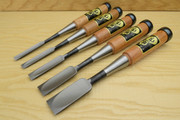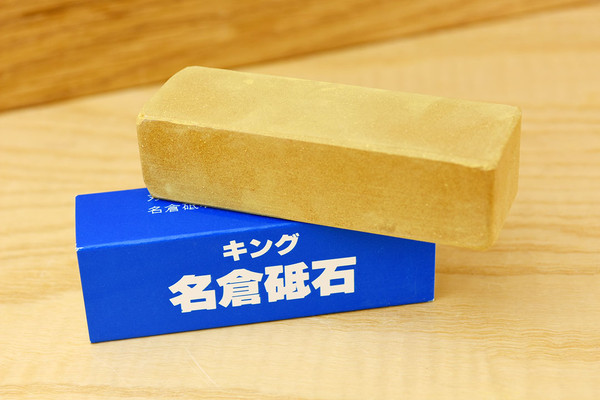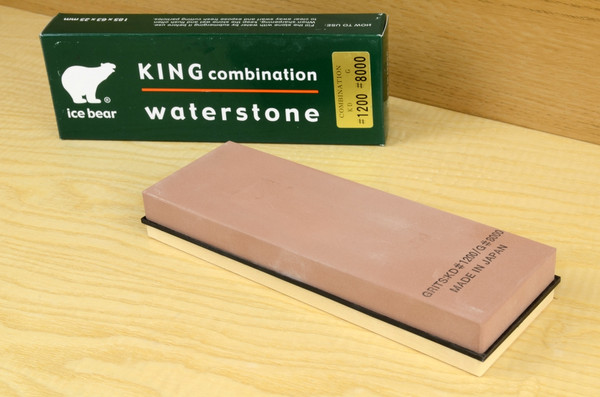This set includes 6, 9, 12, 18 and 24mm chisels.
Fujikawa use a specially selected grade of Hitachi Shirogami White Paper Steel No. 2 to make the hagane layer that forms the back and the cutting edge. It took 10 years of experimentation to find the perfect grade, but they can now produce blades which have similar hardness and edge retention to blue, but retain the higher fracture resistance of white.
Mr Fujikawa insists on absolutely traditional methods. His smiths work in a darkened blacksmithing shop so that they can see the colour of the steel they are working, and use coke forges to minimise carbon loss as the steel is heated. Quenching is done in water as this provides the fast quench needed for highly pure steels. The soft water in Miki city is particularly well suited to the job. The blades are cooled in straw ash to retain as much carbon as possible as the steel structure changes after the quench.
After hand grinding, the blades are fitted with premium grade red oak handles and deeply hot blued hoops.
The manufacturers recommend honing a single flat bevel, following the optimal 34 degree angle that the tools are ground to when supplied.
- Material: Selected White Paper Steel No.2
- Hardness: 62-63HRC approx.
- Handle Material: Hon Akagashi (premium Japanese Red Oak)
Approximate Measurements:
| Size | Overall Length | Handle Length | Useable Blade Length | SKU |
| 6mm (¼") | 220mm (7⅞") | 95mm (3¾") | 57mm (2¼") | 100606 |
| 9mm (⅜") | 220mm (7⅞") | 95mm (3¾") | 57mm (2¼") | 100609 |
| 12mm (½") | 222mm (8¾") | 95mm (3¾") | 57mm (2¼") | 100612 |
| 18mm (¾") | 225mm (8⅞") | 95mm (3¾") | 55mm (2¼") | 100618 |
| 24mm (1") | 222mm (8¾") | 90mm (3½") | 56mm (2¼") | 100624 |
NOTE:
All Japanese chisels are made using a socket tang construction, the bolster narrows into a tang that goes up a hole in the middle of the handle. A separate steel ferrule butts up against the bolster and constrains the wood onto the tang, forming a joint that becomes tighter with use. You might see a fine line running around the neck of the tool, this isn't a crack, it is the join between the ferrule and the bolster.
Click here to read our blog on how to prepare a Japanese chisel













